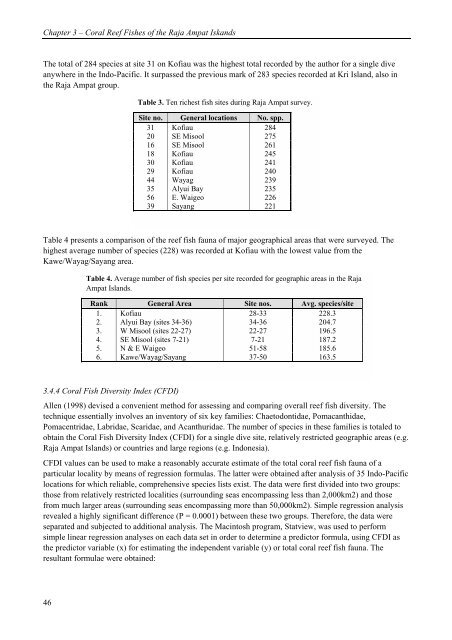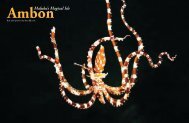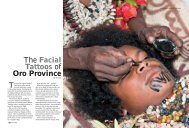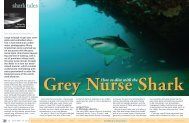Rapid Ecological Assessment - Indo-Pacific Images
Rapid Ecological Assessment - Indo-Pacific Images
Rapid Ecological Assessment - Indo-Pacific Images
- No tags were found...
You also want an ePaper? Increase the reach of your titles
YUMPU automatically turns print PDFs into web optimized ePapers that Google loves.
Chapter 3 – Coral Reef Fishes of the Raja Ampat Iskands<br />
The total of 284 species at site 31 on Kofiau was the highest total recorded by the author for a single dive<br />
anywhere in the <strong>Indo</strong>-<strong>Pacific</strong>. It surpassed the previous mark of 283 species recorded at Kri Island, also in<br />
the Raja Ampat group.<br />
Table 3. Ten richest fish sites during Raja Ampat survey.<br />
Site no. General locations No. spp.<br />
31 Kofiau 284<br />
20 SE Misool 275<br />
16 SE Misool 261<br />
18 Kofiau 245<br />
30 Kofiau 241<br />
29 Kofiau 240<br />
44 Wayag 239<br />
35 Alyui Bay 235<br />
56 E. Waigeo 226<br />
39 Sayang 221<br />
Table 4 presents a comparison of the reef fish fauna of major geographical areas that were surveyed. The<br />
highest average number of species (228) was recorded at Kofiau with the lowest value from the<br />
Kawe/Wayag/Sayang area.<br />
Table 4. Average number of fish species per site recorded for geographic areas in the Raja<br />
Ampat Islands.<br />
Rank General Area Site nos. Avg. species/site<br />
1. Kofiau 28-33 228.3<br />
2. Alyui Bay (sites 34-36) 34-36 204.7<br />
3. W Misool (sites 22-27) 22-27 196.5<br />
4. SE Misool (sites 7-21) 7-21 187.2<br />
5. N & E Waigeo 51-58 185.6<br />
6. Kawe/Wayag/Sayang 37-50 163.5<br />
3.4.4 Coral Fish Diversity Index (CFDI)<br />
Allen (1998) devised a convenient method for assessing and comparing overall reef fish diversity. The<br />
technique essentially involves an inventory of six key families: Chaetodontidae, Pomacanthidae,<br />
Pomacentridae, Labridae, Scaridae, and Acanthuridae. The number of species in these families is totaled to<br />
obtain the Coral Fish Diversity Index (CFDI) for a single dive site, relatively restricted geographic areas (e.g.<br />
Raja Ampat Islands) or countries and large regions (e.g. <strong>Indo</strong>nesia).<br />
CFDI values can be used to make a reasonably accurate estimate of the total coral reef fish fauna of a<br />
particular locality by means of regression formulas. The latter were obtained after analysis of 35 <strong>Indo</strong>-<strong>Pacific</strong><br />
locations for which reliable, comprehensive species lists exist. The data were first divided into two groups:<br />
those from relatively restricted localities (surrounding seas encompassing less than 2,000km2) and those<br />
from much larger areas (surrounding seas encompassing more than 50,000km2). Simple regression analysis<br />
revealed a highly significant difference (P = 0.0001) between these two groups. Therefore, the data were<br />
separated and subjected to additional analysis. The Macintosh program, Statview, was used to perform<br />
simple linear regression analyses on each data set in order to determine a predictor formula, using CFDI as<br />
the predictor variable (x) for estimating the independent variable (y) or total coral reef fish fauna. The<br />
resultant formulae were obtained:<br />
46





